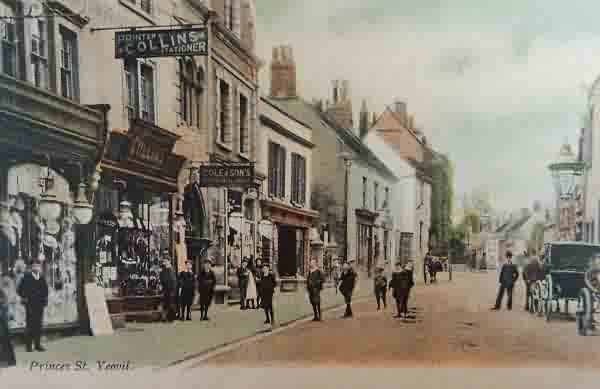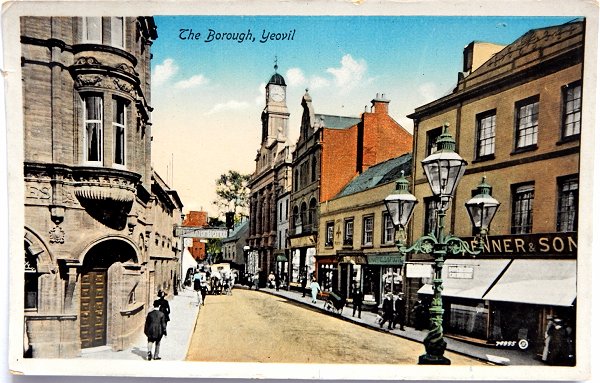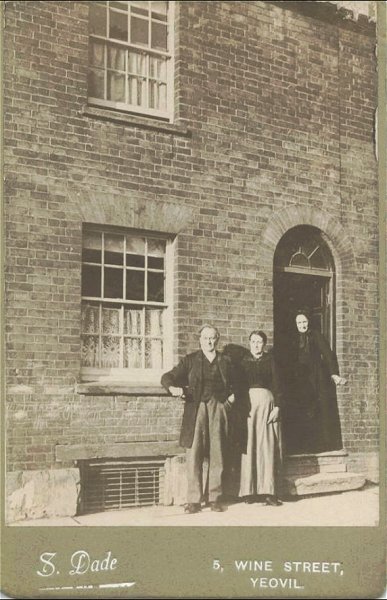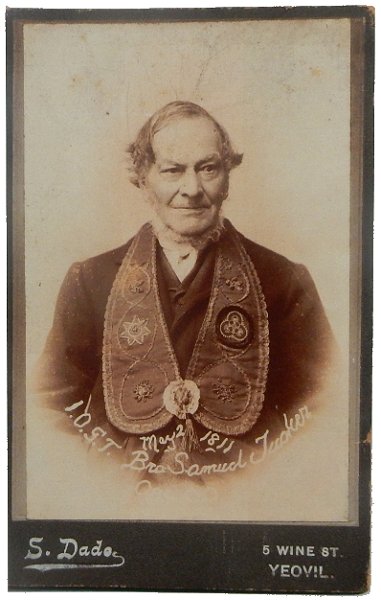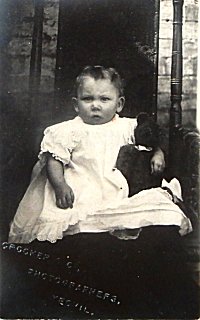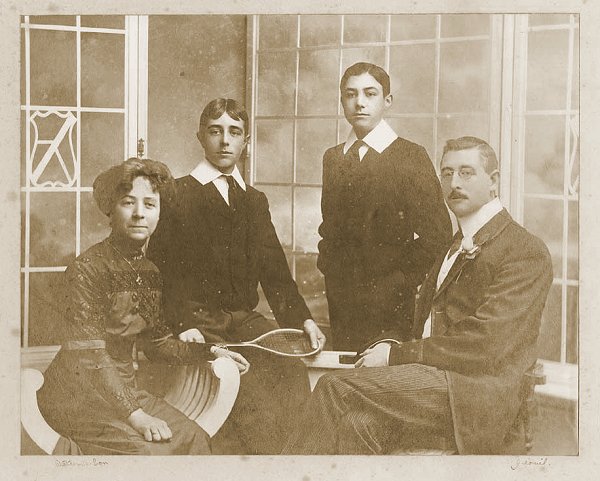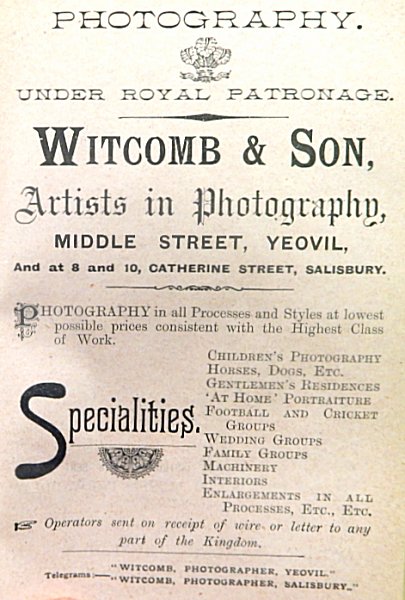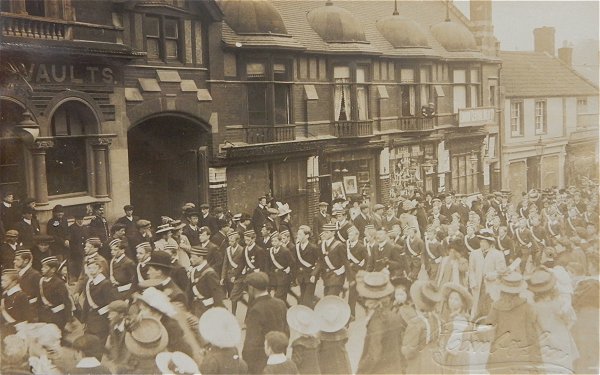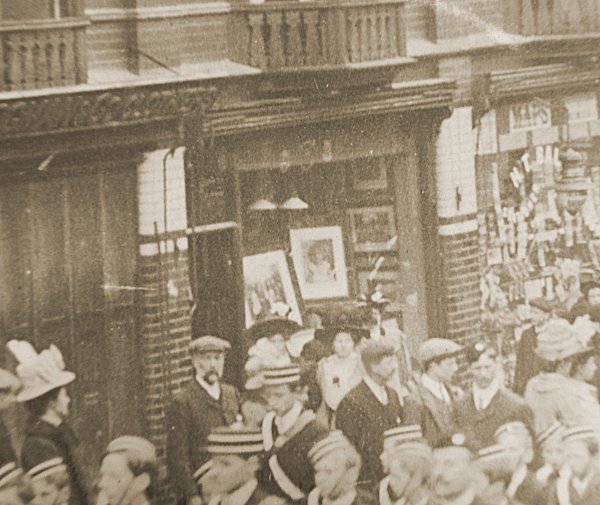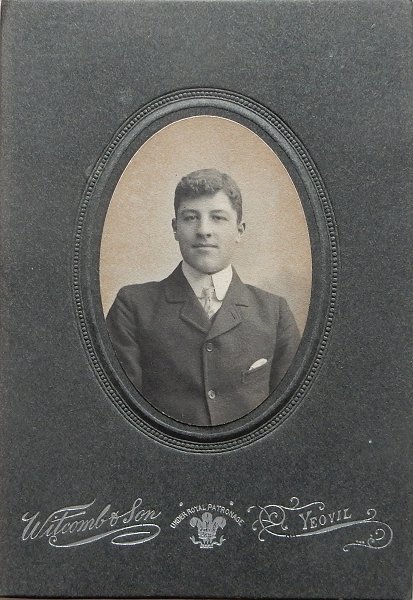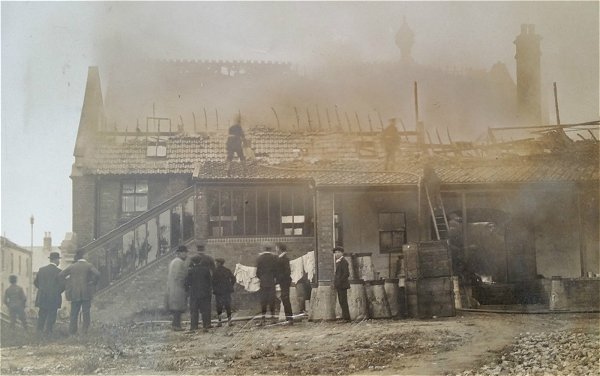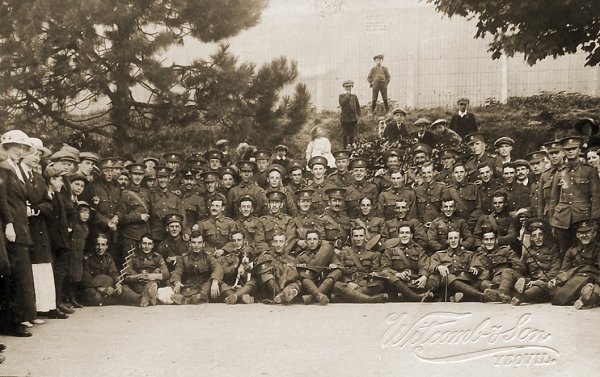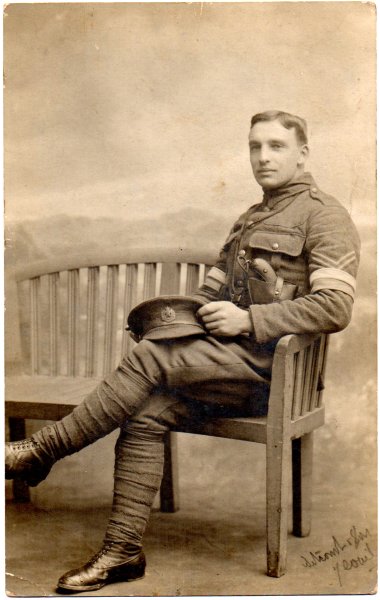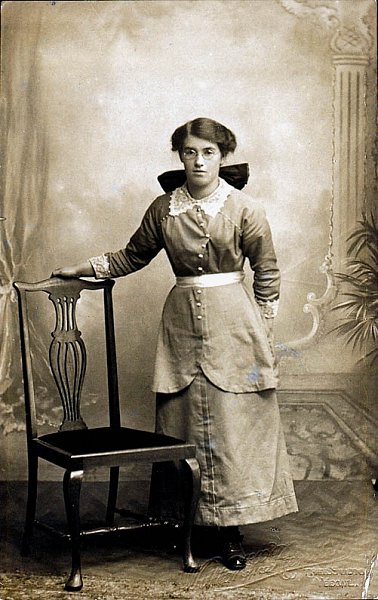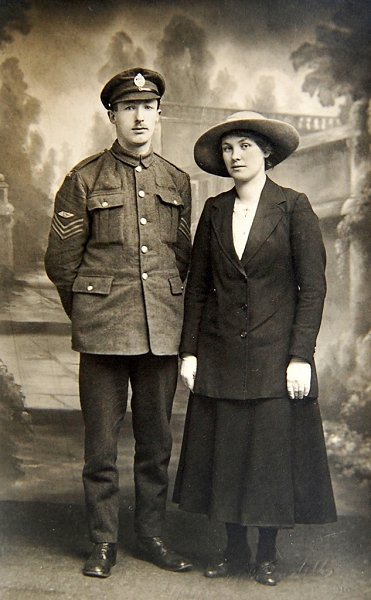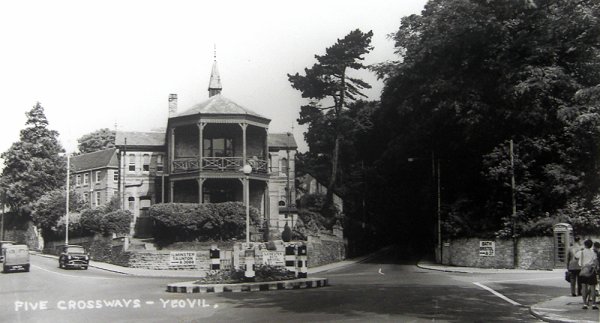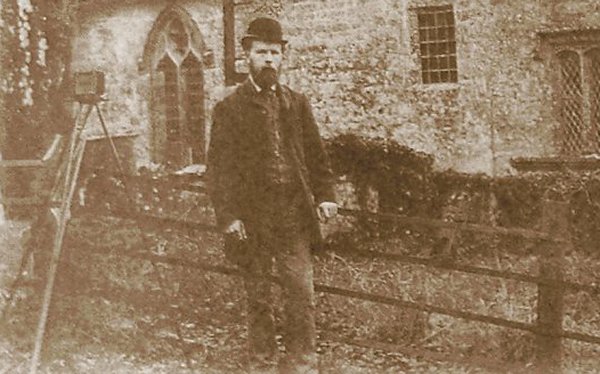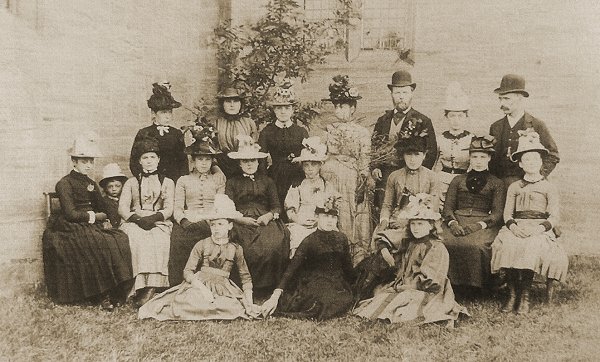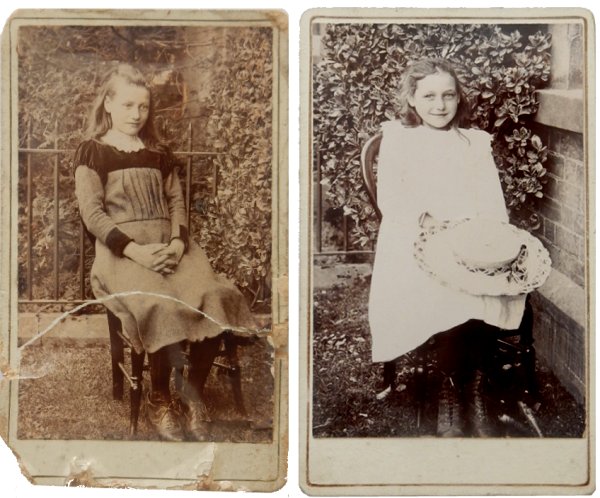yeovil trades & traders
Yeovil's Photographers
The Victorian craze comes to Yeovil
-
Introduction
-
Visiting Professional Photographers
-
John Eastham (from Taunton)
-
Henry & Jonas Walter (from London)
-
Yeovil's Professional Photographers
-
Yeovil's Amateur Photographers
![]()
Introduction
The 1850s saw the introduction of the photographic studio in England, when the new 'science' of photography meant that a 'likeness' became affordable for the masses. As with other towns, Yeovil saw its fair share of photographic artists setting up studios and this page is a synopsis of the known early photographers in Yeovil, several of whom have their own pages on this website.
Initially, in the 1850s, temporary photographic studios would be set up in shops in the town by visiting professional photographers and several are noted below.

An advertisement for a temporary photographic studio for an un-named photographer from the Sherborne Mercury's edition of 26 August 1856.
In 1860 Yeovil had just one professional photographer, Henry Goodfellow. In 1862 John Chaffin established his photographic studio in Hendford and by 1866 James Francis had opened a photographic studio in Princes Street. In 1882 Adam Gosney of Sherborne opened a studio (one of his six) in Middle Street. By the 1890's these pioneers had been joined by Mrs Lewis Lee of Earle Street, William Sherrell of Middle Street, John Bell of Hendford, Jarratt Beckett of Hendford and FG Christopher of Middle Street. The following decade saw the arrival of more professional photographers with Witcomb & Son of Middle Street, Mrs Grace Cumming of Middle Street, Henry Stein McNair of Court Ash and Ross & Co of Princes Street.
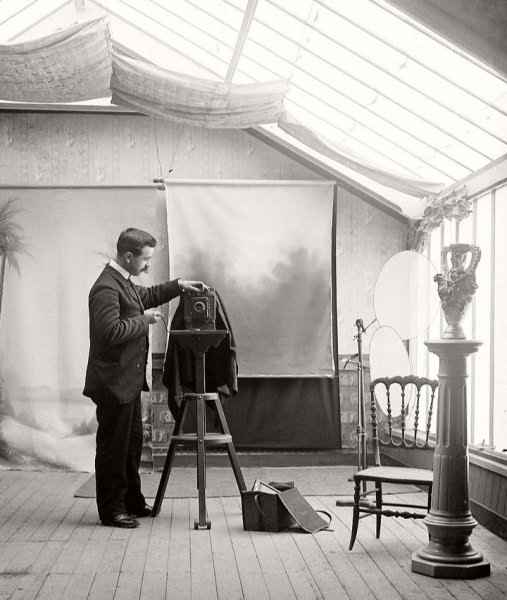
Many advertisements by photographers refer to a 'glass chamber' - this was simply a photographic studio with as much natural light as possible, gained by having large windows and a glazed roof, as here. Note the two reflectors at right
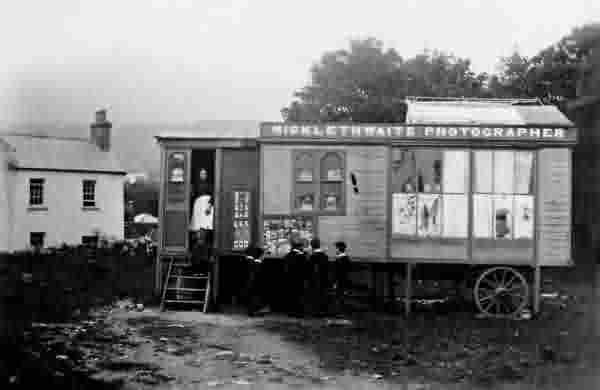
Later, mobile photographic studios and darkrooms appeared. It was likely that various photographers, such as Adam Gosney, who purported to set up various studios in villages, would have used a similar portable set-up.
As an example of the cost of a photograph - the visit to the photographer's studio was generally free and the following list of prices, from J Bell of Hendford in 1896, are typical -
- Cartes de visite - 12 copies from 7 shillings (about £35 at today's value)
- Cartes de visite - 6 copies from 4 shillings
- Cartes de visite - 3 copies from 2s 6d
- Re-orders - 6d each, any number
- Cabinet Cards - 12 copies from 12 shillings
- Cabinet Cards - 6 copies from 7s 6d
- Cabinet Cards - 3 copies from 4s 6d
- Re-orders - 1s each, any number
Cartes de visite were introduced in Britain in 1859 and were a relatively cheap way for almost anyone to have their photograph taken. Cartes de visite (also known as cartes or CDVs), are small paper-on-card photographs. They typically measure 4" x 2½" (102mm x 62mm) and the photograph which was pasted on to the card was roughly cut to about 3½" x 2¼" (90mm x 57mm). They were never actually used as visiting cards.
Cabinet cards are the larger version of the carte de visite and customers were often sold the same photo in both sizes. Cabinet cards measure 16.5 x 10.5cm and usually have the studio name and address printed at the bottom. The cabinet card persisted until about 1910 by which time it had been replaced by the much cheaper postcard format.
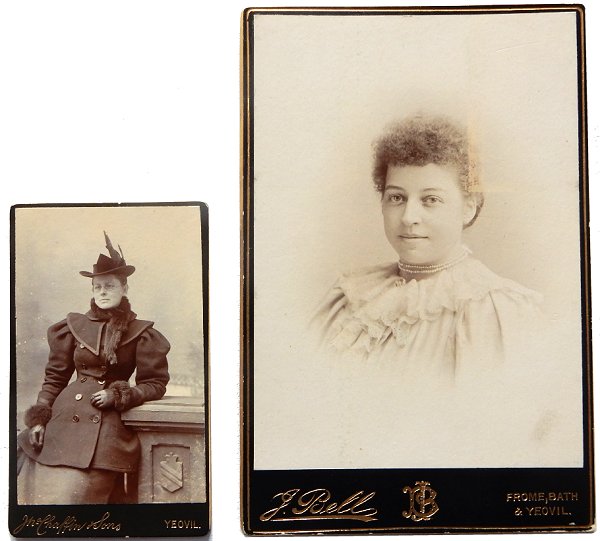
Both from my
collection
At left is a carte de visite by John Chaffin & Sons, at right a cabinet card by John Bell, both date to the 1890s and are reproduced here about actual size.
Visiting Professional Photographers
Thomas SharpThomas Sharp (1806-1896) 'of London' (see advertisement below) is thought to have been the first professional photographer to visit Yeovil with a temporary photographic studio set up in Reckleford (today's Market Street) for a short six-month season in 1847. Thomas Sharp was born in Cheapside, London, on 18 August 1806 and baptised on 15 February 1807 at St Lawrence Jewry & St Mary Magdalene, Milk Street, London. A very early pioneer of photography, he purchased a licence permitting him to take daguerreotype portraits in parts of Somerset and established the first photographic studio in Bath by November 1841. Leaving Bath in 1843, he went to London to work with either Beard or Claudet. By 1846, again working independently, he set up a portable photographic studio at Weston-super-Mare. In 1847 he had a brief sojourn in Yeovil, he travelled throughout the West Country setting up short-term studios, variously in Torquay, Exmouth, Weymouth and Dorchester. He sold his portable studio in 1853. The only references to him in Yeovil are from the Western Flying Post reproduced here.
|
|
|
John EasthamJohn Eastham was born around 1821 at Samlesbury, near Blackburn, Lancashire. He was initially a book-keeper in Blackburn but then traded as a coal merchant. Selling the coal business, he set up as a photographic artist, possibly in conjunction with his younger brother Silas who had a daguerreotype business in Preston, Lancashire. John worked as a photographer travelling to Bradford in 1849, Worcester in 1851 (where he was assisted by his youngest brother Enos). He then travelled to Malvern and then Taunton in 1852. He returned to Taunton in 1853, staying at 2 Hammet Street. He was possibly the second professional photographer to visit Yeovil, with a temporary photographic studio set up in Raymond's gent's outfitters in Middle Street. The only references to him in Yeovil are from the Western Gazette's edition of 5 April 1853 and the 12 April 1853 edition of the Sherborne Mercury reproduced here.
Advertisement from the Western Gazette's edition of 5 April 1853.
Advertisement from the Sherborne Mercury's edition of 12 April 1853.
|
|
|
John Shattock CliftJohn Shattock Clift was another professional photographer to visit Yeovil. John Shattock Clift was born in Spaxton, Somerset, in 1820. He was the third of the five children of labourer George Spaxton (1791-1879) and Sarah née Dibble (1791-1869). John was baptised at Spaxton on 20 March 1820. In the 1851 census he was listed in Bridge Street, Taunton, and gave his occupation as a master confectioner. In 1855 he visited Yeovil for a brief period with a temporary photographic studio set up in Mrs Cox's premises in South Street. By the time of the 1861 census he was lodging at 12 Boyces Street, Brighton, where he gave his occupation as an 'Artist in Photography'. He was listed as a photographer at Cherry Grove, Rowbarton, Taunton, in 1871 but by 1881, 61-year old Clift was working as a botanical compounder at 53 Glatney Esplanade, St Peter Port, Guernsey. The only reference to him in Yeovil is from the Western Flying Post of 24 July 1855 reproduced here.
|
|
|
Philip MonsonPhilip Monson was another visiting professional photographer in Yeovil with a photographic studio in Princes Street during the mid-1850s. Philip Monson was born on 6 June 1828 in Colchester, Essex, the son of gardener James and Susannah Munson. He was baptised on 12 April 1829 at the Lion Walk Meeting House (Independent), Colchester. In the 1851 census Monson was recorded as an artist portrait painter at 5 Chapel Terrace, Wolverhampton. Philip had three brothers, Edward (b1822), Benjamin (b1824) and Charles (b1830). All four brothers would eventually all be connected with photography. Early in 1855 Philip was practising on his own in Bedford, where he was using a camera capable of producing large format daguerreotypes. Later in 1855 he went to Reading and Winchester and in 1856 he is known to have worked in Salisbury and Yeovil. The advertisement below is from the Western Gazette's edition of 26 August 1856. Monson left Yeovil in late October 1856, emigrating to Canada around 1859-60.
|
|
|
Mr M BrownMr M Brown was another professional photographer to visit Yeovil with a temporary photographic studio set up in Perry's Hotel in South Street during the summer of 1856. Mr Perry was, in fact, John Perry the technical blacksmith and temperance hotelier photographed around 1858 by John Swatridge (see below). By August 1856 Brown had removed to Newton Abbot where he set up a photographic studio in Station Road. Philip Pethick Perry, the son of John Perry, was trained by Brown during his visit to Yeovil and took over the photographic portrait rooms at his father's hotel when vacated by Brown. The advertisement below was placed in the Western Flying Post from April to June 1856.
|
|
|
Henry & Jonas WalterProbably among the last of the visiting professional photographers since by now there were several locally established photographers, H&J Walter of Oxford Street, London, visited Yeovil with a temporary photographic studio in Mrs Hand's premises in Silver Street - the advertisement below is from the 26 June 1860 edition of the Western Flying Post. Mrs Hand was the widow of artist and photographer George Monck Hand. Henry Walter was born in Hull, Yorkshire, in 1815 and his brother Jonas was born in Hull in 1818. Both brothers remained bachelors. In the 1851 census both brothers were lodging at the Fountain Inn, Southgate, Chichester and both gave their occupations as 'Artist and Profile Taker'. Their advertisement for their 1860 visit to Yeovil gave their London studio address as 538 Oxford Street, London,
|
Yeovil's Professional Photographers
John & Thomas Swatridge
It is probable that John Swatridge (1810-c1860s) was the first professional Yeovil photographer and the carte de visite below dates to the late 1850s, as evidenced by the very simple logo on the reverse.
|
||
|
|
The photographic portrait at left of John Perry, technical blacksmith and temperance hotelier, is thought to have been taken around 1863. Perry was a keen supporter of early photography in Yeovil and Perry's Temperance Hotel in South Street frequently hosted temporary studios by visiting professional photographers. John Swatridge was a Marble Carver and Gilder by trade and photography appears to have been a sideline although he is known to have had a photographic studio. His son, Thomas Sydenham Swatridge (1841-1909) also became a professional photographer and eventually ran two photographic studios in London. For John & Thomas Swatridge's webpage - click here. |
|
|
John Swatridge's logo on the back of the John Perry portrait above.
A Carte de Visite by John Swatridge, with the back logo shown by its side. The square corners of the CDV would suggest a date of the very early 1870s.
Another carte de visite by John Swatridge. Slightly later than the previous example and dating to the late 1860s - indicated by the carpet showing at the sitter's feet (this full-length style of portrait was out of fashion by the early 1870s), the square corners of the carte (rounded corners were only introduced in the early 1870s to prevent tearing the pages of the newly fashionable carte albums) and the small logo on the back. What dates it most accurately is the sitters fashionable hat and dress - the crinoline went out of fashion quite dramatically about 1868. The lengths of skirt that used to fall over the crinoline were gathered up at the back over a bustle and her ensemble characterises the new style of fashionable women’s dress. It has an over-skirt and the bodice now extends below the waist.
The announcement of the collaboration between Thomas Swatridge and artist Frederick Treble who would produce oil portraits based on Thomas' photographs ran in the Western Flying Post throughout May and June 1859. The partnership did not last long as the following year Thomas was collaborating with another artist - Mr Lawson (see below).
A carte de visite by Thomas Swatridge. The studio address of 50 Dalston Lane dates this carte to between 1877 and 1881. Thomas' later photographic studios were at 66 Church Street, Camberwell and 50 Dalston Lane, Hackney (1877-1881) before moving to 3 Alfred Terrace, Holloway Road, Islington (1883-4). By the time of the 1901 census Thomas had retired and he died in Lambeth in 1909. |
||
|
|
||
Philip Pethick PerryMr M Brown (see above) was a professional photographer who visited Yeovil with a temporary photographic studio set up in Perry's Temperance Hotel in South Street during the summer of 1856. By August 1856 Brown had left Yeovil, although during his sojourn in Yeovil he had trained John Perry's son, Philip, in the art of photography. Philip Pethick Perry, born in 1837 in Sherborne, Dorset, was the son of technical blacksmith and temperance hotelier John Perry mentioned above. By trade Philip was a blacksmith like his father. Nevertheless, as seen from the advertisement below, after Brown had left Philip Perry advertised himself as a photographer at his father's hotel. By 1861 however, Philip was boarding at 23 Oxford Street, Swindon, and was working as an engine fitter. By 1881 he was working as a surveyor in Fulham, London. He died on 5 September 1903 in a nursing home at Harrogate, Yorkshire. None of Philip's photographic work is known.
This advertisement was placed in the Sherborne Mercury's edition of 12 August 1856.
This photograph of South Street was taken around the 1890's and shows the Globe and Crown at left, opposite is the Greyhound Hotel and next door to that was the Cow Inn. Just visible at the end of the street is the Three Choughs Hotel and the King's Arms. Between the Choughs and the Cow was the Market House Inn and three un-named beerhouses. Despite the huge number of pubs in this short run of South Street, the white building with the black porch left of centre was John Perry's Temperance Hotel.
|
|
|
Henry Marsh Custard Jnr
One of the earliest of Yeovil's professional photographers was Henry Marsh Custard Jnr but it appears that he was only operating for a short period during 1856. Born in Yeovil on 8 August 1835 he was the son of Henry Marsh Custard, a bookseller, printer and stationer whose premises were on the corner of what is now Princes Street and Westminster Street. Henry Jnr clearly set up his photographic studio in his father's premises but this venture seems to have been only temporary. Henry Jnr became an artist and died in Rome on 12 April 1863 age 28.
Advertisement placed in the 1 July 1856 edition of the Western Flying Post.
Advertisement for Henry Custard Jnr's 'Photographic Institution' in the 2 December 1856 edition of the Western Flying Post. As a rough guide to costs at this time, five shillings would, at today's value, be equal to about £20 - so very early photography was not cheap for the consumer.
This photograph, one half of a stereoscopic pair, was taken around 1870 and looks down Hendford with High Street at extreme left. At right is Stuckey's Bank, facing High Street, and next to it (by the lamp-post) was Henry's photographic studio and his 'Photographic Institution'.
The headstone inscription reads "To the memory of H Marsh Custard, British Artist of Yeovil Somerset England who died April 12th 1863 aged 28 years". The slab inscription reads "In sacred remembrance of Henry Marsh Custard of Yeovil Sumerset (sic) England. Born August 8th 1834 Died April 19th (sic) 1863. This tribute is placed to his beloved memory by his sorrowing Mary. Blessed are the dead which die in the Lord from henceforth; Yea, saith the spirit, that they may rest from their labours and their works do follow them".
|
|
|
George Bartlett CogganGeorge Bartlett Coggan was born in Aller, Somerset, in 1816 and baptised at St Andrew's church, Aller, on 3 June 1816. He was the eldest of the four children of yeoman farmer John Coggan (1791-1870), originally from Muchelney, and his wife Hannah née Cox (b1799), originally from Martock. George was living in Curry Mallet with his parents and siblings in the 1841 census. During the 1850s George became involved in the new art of photography but, once again, he seemed to move around a lot. He is known to have had a studio in Regent Street, London, before moving to 107 Friar Gate, Derby, in 1857 but moving on again in early 1858.
This carte de visite is of Susan Ellis (1839-1903) originally from Halstock, Dorset, who, in the 1861 census (about the time of this photograph) was listed as a 23-year old servant living with and working for the family of bookseller, stationer and printer Henry Wippell at (today's) 1 & 3 Princes Street. George Bartlett Coggan died at Shepton Mallet on 26 January 1887, aged 71. His will was proved the following May when it was noted that his personal estate was valued at £41 (about £18,500 at today's value). For George Bartlett Coggan's webpage - click here
|
Barnet and Isaac GilesBarnet Giles was born in 1810 in Poland, most likely of Jewish descent. He married Ann (b1816, Poland) and their first child, John, was born in Poland in 1841. By 1844 the family had moved to England; their daughter Sarah Anne was born in Bristol in 1844, Martha (b1846) and Isaac (b1847) were both born in Frome, Somerset, and Mary was born in Bruton, Somerset, in 1849. In the 1851 census the family were living in Bridge Street, Wincanton. Barnet gave his occupation as a travelling tea dealer. By the time of the 1861 census the family had moved to High Street, Wincanton, and the family had grown with two daughters; Rebecca (b1853) and Lydia (b1855), both born in Wincanton. Barnard gave his occupation as a jeweller and hawker, while 14-year old Isaac gave his occupation as a photographer. By August 1861 the family had moved to Yeovil and ' B Giles & Son' were placing weekly advertisements for his jewellery business in Princes Street which also boasted a photographic department. Undoubtedly Barnet ran the jewellery side of the business, while Isaac managed the photographic side of the business. The advertisement ran at least until September 1862. In the autumn of 1862, Ann died in Yeovil. By the beginning of 1867 Isaac had removed to Bristol, where he set up as a jeweller at Temple Street. This, presumably ended the photographic side of the business of B Giles & Son. In 1869 Barnet was declared bankrupt and it was probably this event that caused him to leave Yeovil. On 3 April 1875, at the Wesleyan Chapel, Barnet 'late of Yeovil' married Maria Noble (b1851), the eldest daughter of Mr T Noble of Great Western Terrace.
This is an advertisement placed in the Sherborne Mercury every week from August 1861 until (at least) September 1862.
From the 19 November 1869 edition of the Western Gazette - the first notice of Barnet Giles' bankruptcy.
|
George Monck HandGeorge Monck Hand was born in Southwark, Surrey, on 26 June 1828, the son of John Hand (1780-c1828), Captain of Marines, and Sophia Anne née Tracy (b1789). George was baptised at St George, Camberwell, Surrey on 29 July 1828 at which time his father was deceased. By 1851 George was studying at the Terrace House Training Establishment for Schoolmasters in Battersea. It is not known if he became a schoolmaster, but the Western Flying Post reported that on 2 September 1857, at St John's church, Yeovil, George "of Chatham" married Sarah Leigh Rendall, only daughter of Giles Rendall, confectioner of Silver Street, and his wife Melina. George and Sarah were to have a daughter, Alice (b1860). By the time of the marriage Giles Rendell was deceased and Melina was running the confectionery shop next door to the Half Moon Inn. It was in the confectionery shop that George Hand briefly set himself up as an artist and photographer. He placed an advertisement in the 10 November 1858 edition of the Bridgwater Mercury that 'heliographic portraits' could be obtained at his studio in Silver Street, 2 doors from the corner of Middle Street. (Heliography is the photographic process invented by Joseph Nicéphore Niépce around 1822. The process used Bitumen of Judea, a naturally occurring asphalt, as a coating on glass or metal that hardened in proportion to its exposure to light. When the plate was washed with oil of lavender, only the hardened areas remained). George was also listed in a trade directory of 1859 (his only trade listing). George Monck Hand died on 19 May 1860 at Yeovil. He was aged just 31. His will was proved in September 1860 in which he was described as an Artist. His effects were valued as "under £300" (in excess of £300,000 at today's value). The following month Sarah let out his studio to probably the last of the visiting professional photographers, H&J Walter of Oxford Street, London. No examples of his photographic work have yet been discovered. In the 1861 census his 33-year old widow, Sarah, was listed as a "Pastrycook employing 23 men, 1 boy & 1 girl" still living in Silver Street with her daughter Alice. Sarah's mother Melina died in 1862. In the autumn of 1862, at Southampton, Sarah married Henry White and in the 1871 census they were living in Silver Street (but now two doors away from the Half Moon Inn) and Henry gave his occupation as a Confectioner. Next door, in the original confectioner's shop next door to the Half Moon, was George T Rawlins (see next) and his family. George was a photographer. It appears, however, that by this time the original confectionary shop had been split into two separate premises.
This is an enlargement of the central section of a photograph dating to 1900. The Half Moon is the three-storey building just to left of centre and Giles and Melina Rendell's confectionery shop, where George Monck Hand set up his photographic studio, is the two-storey building at centre.
|
George T RawlinsGeorge Monck Hand (see previous) died in 1860 and it appears that he had set up a photographic studio in Silver Street by converting his wife's parents' confectionery premises into two - his studio being in one part and the confectionery business in the other part. She continued the business after his death and the death of her parents, as noted in the 1871 census, but her husband's studio was apparently taken over by George T Rawlins. George Rawlins (b1839), originally from Amesbury, Wiltshire, was listed as a photographer with his wife Clara and their three young children in the 1871 census. There is no further information on George or Clara either before or after 1871, he is not listed in any trade directories and no examples of his photographic work have yet been discovered.
|
|
|
Henry Goodfellow
He is known to have been in Yeovil working as a photographer from 1867 and placed several advertisements in the Western Gazette regarding his new studios in Kingston, next door to the Red Lion Inn. By 1871 he had moved to Brighton Place, Clevedon, again working as a photographer. In the 1881 census 71-year old Henry was lodging at Solva Place, Clevedon, and gave his profession as 'Master Photographer'. Henry Goodfellow returned to Wincanton during the 1880s (when the carte de visite by him above left was taken) and he died there in 1890 aged 80.
Kingston Turnpike House and gates photographed about 1860 by Henry Goodfellow. The house was moved a hundred yards further down Kingston in 1875.
This advertisement was placed in the Western Gazette's edition of 29 March 1867.
Henry's advertisement in the Western Gazette's edition of 27 December 1867 in which he describes himself as a 'Portrait and Landscape Photographer'.
A carte de visite by Henry Goodfellow from the time (between 1867 and 1871) his studio was in Kingston, adjacent to the Red Lion Inn. The lady's full bell-shaped crinoline dress was becoming a little old-fashioned for this time.
An evocative cabinet card by Henry Goodfellow showing a rural haymaking scene, presumably near Wincanton, during the 1890s.
The central scene of the above cabinet card, enlarged.
|
|
|
John Chaffin (& Sons)
|
||
|
|
John Chaffin was one of the first in Yeovil to become involved in the newly developing technology of photography and in 1862 he established himself as a photographic artist with a studio at 6 Hendford (immediately next door to the Butcher's Arms). He was soon joined by his family and the 1871 census shows that John gave his occupation as a Photographer, as did sons Thomas and John, by now aged 21 and 17 respectively. daughters Kate and Maria, aged 20 and 19, were both listed as Artists and were employed hand-tinting photographs and also producing portraits in oils from photographs. John Chaffin & Sons also opened a branch studio in Taunton. The firm was active until 1919. William Chaffin, photographer of Sherborne, was John Chaffin's cousin. For John Chaffin & Sons webpage - click here. |
|
|
|
||
James Ray FrancisThere is very little information regarding James Francis as a photographer in Yeovil. At the Colmer manslaughter trial in 1863 he gave evidence that he was an assistant photographer at the studio of John Swatridge. He was one of the first Yeovil photographers to be listed in a trade directory when the Post Office Directory listed him as a Photographer of Princes Street in his own right in 1866 although, of course, others had been operating as professional photographers in the town for years. This is the only reference to him in a Yeovil trade directory. No examples of his photographic work have been found.
|
|
|
Cole & Son
There are no other references to Cole & Son as photographers, and no examples of their work has been found.
|
|
|
Ebenezer WhitbyEbenezer Whitby was born in 1815 in Yeovil, the fourth son of Elias Whitby Snr and his wife Hannah née Hooper and he was the younger brother of Elias Whitby Jnr. In 1847 Whitby was in partnership with Benjamin Trenchard and the firm of Trenchard & Whitby traded as 'Stationers, Booksellers and Printers' at 8 Princes Street where Trenchard and his wife lived above the shop premises with an apprentice, William Guppy, and a house servant. The partnership was dissolved by mutual consent in May 1854 after which Ebenezer traded on his own account. Ebenezer Whitby died in the summer of 1889 but his business was carried on as Whitby & Sons by his sons John and Frederick well into the twentieth century. In truth it is not known if Ebenezer Whitby was the photographer who took the photograph for the carte de visite below, or just the publisher. Certainly E Whitby & Sons, presumably one or other of the sons, was a photographer for Frith's who published postcards and several Frith postcards in my collection are attributed to E Whitby & Sons. For Ebenezer Whitby's webpage - click here
This is the front and back of a carte de visite produced by Ebenezer Whitby, of the cottage at Ninesprings and is probably the earliest of any images of Ninesprings. The writing on the back says "EB from GSS in remembrance of a walk to Nine Springs. Oct 7th 1876". However the fact that it has square corners almost certainly dates the CDV to the 1860s (rounded corners were introduced during 1872 to 1879 to slip into newly-introduced slotted album pages). Much smaller than later cabinet cards, this CDV is 2½" x 4" (65mm x 100mm).
|
|
|
Adam Gosney
|
||
|
|
Adam Gosney was born in 1844 and in the 1861 census was working as a servant at King's School. He established himself as a photographer next door to the Plume of Feathers in Half Moon Street, Sherborne, Dorset in 1866, and opened a studio in Yeovil in May 1879. In 1879 Gosney advertised his new branch studio in Yeovil at bookseller and stationer Mr Clark's premises. Gosney was recorded as having photographic studios at 19 Middle Street in 1883. In 1880 Whitby's Yeovil Almanack Advertiser listed him as a Photographer with studios at 39 Middle Street. The listing was repeated in Whitby's edition of 1889 but he was not listed in trade directories thereafter although he clearly maintained a Yeovil studio into the 1890s. |
|
|
Adam Gosney, in 1892, was described in an advertisement as ‘Photographic Artist, Carver, Gilder, Picture Frame Manufacturer, Established 1866’. He drew attention to his ‘Carbon Enlargements’, which, "when painted in oils combine the striking resemblance of photographs, with the breadth, effect, and permanency of first-class oil paintings". His charges were from ten shillings to five guineas ‘framed complete’. His Middle Street studio was most likely taken over by FG Christopher around 1895. He opened temporary studios several times; Gillingham (1881), Mere (1881), Ilchester (1882) etc. By the 1890s he had permanent studios in Sherborne, Yeovil, Crewkerne and Gillingham. In the 1911 census, at the age of 66, he gave his occupation as 'Photographer and Frame Maker'. Gosney died at Half Moon Street, Sherborne, on 11 October 1921.
|
||
|
A notice placed in the 23 May 1879 edition of the Western Gazette informing the public of Adam Gosney's new studio opening in Yeovil.
Adam Gosney's advertisement in Whitby's Yeovil Almanack Advertiser of 1880. The price of cartes de visite at six shillings per dozen equates to about £27 at today's value.
.... and his advertisement in the 1882 edition of Whitby's. The prices of 10s 6d to £5 5s 0d at today's value equate to about £45 and £475.
|
||
|
|
||
Lewis Lee
|
|
Almost nothing is known of Lewis Lee except that for a year or two he had a photographic studio at 25 Earle Street. There was only one trade directory listing and that was in the 1895 edition of Whitby's Yeovil Almanack Advertiser - for Mrs Lewis Lee. Lewis Lee, a member of the congregation of Christ Church (he was appointed a sideman of the church in 1894), was secretary of the Liberal Unionist and Conservative Association in Yeovil in 1894 and was engaged as a Liberal Unionist agent for the district in April 1895. The Lees left Yeovil in 1896.
A cabinet card by Lewis Lee of four Yeovil girls; Louie Gawler, Evelyn Williams, Nina Mitchell and Florrie Mitchell - photographed in the mid-1890s.
Lewis Lee's logo on the back of the above cabinet card.
Advertisement in the Western Gazette's edition of 11 September 1896 selling up Lee's photographic studio and equipment..
|
|
|
William Sherrell
|
||
|
|
William Sherrell was born in Hoddesdon, Hertfordshire, in 1837. In 1871 he gave his occupation as an Artist but he is known to also have been a photographer with a studio at 107 Newhall Street, Birmingham. It is not known when he moved to Yeovil, but was certainly here by 1891. In the 1891 census William was living at 'Hill View' Sherborne Road and gave his occupation as 'Artist & Photographer'. William was listed as an 'Artist & Photographer of 55 Middle Street' in Whitby's Yeovil Almanack Advertiser of 1895 but as just a Photographer of 165 Sherborne Road (presumably his home address, not his photographic studio) in Whitby's edition of 1898. His final trade listing was in Whitby's edition of 1903 in which he was listed as a 'Photographer of 58 (sic) Middle Street'. William had retired and Grace Cumming had taken over his studio by 1907. For William Sherrell's webpage - click here.
|
|
|
|
||
Grace Cumming
|
||
|
|
Grace Cumming was born in 1863 in Battersea, London. In the 1881 census she was lodging in Southampton and gave her occupation as a Photographer. In the 1891 census both she and her sister Kate were listed as Photographer's Assistants in Bournemouth. By 1901 she was a Photographer's Manageress in Sandown, Isle of Wight. By 1907 she had moved to Yeovil and was listed as a Photographer in Collins' Yeovil Directory. The portrait above left was taken by Grace Cumming around 1910 and the sitter was Ellen Jane Pike of Yeovil (1894-1973), known as Nellie. She married Albert McMillan (1894-1968) in 1918 and her engagement photograph with Albert, by Rendell, is shown below - click here. |
|
|
For Grace Cumming's webpage click here |
||
|
|
||
|
|
||
John Bell
|
||||
|
|
John Bell was born in 1845 at Silton, Dorset (just north of Gillingham), and was a carpenter and millwright by trade. By 1881 he was living in Frome and was a professional photographer with an apprentice and was still in Frome at the time of the 1891 census. By 1896 John was living in Yeovil and was listed in the Western Gazette Almanac of that year as an 'Art photographer of Hendford'. His studio was at Fern Bank Villa in Hendford (adjoining the Masonic Hall) but he clearly didn't stay in Yeovil very long since Jarratt Beckett (see below) took over his studio almost immediately. By 1911 John was retired and living in Burnham on Sea where he died in 1914. |
|||
|
John Bell is also known to have had studios at Bath and at Barry Dock, running both studios concurrently with the Frome studio and most likely in the 1900s.
A carte de visite by John Bell taken during the 1880s at his time in Frome before moving to Fern Bank Villa in Hendford.
John Bell's advertisement in the Western Gazette Almanac of 1896.
Station Road and Yeovil Town Station photographed in 1896 by John Bell. The terrace of buildings at left, still there today, is South Western Terrace built by Levi Ridout.
The artistic back of a cabinet card by John Bell, giving both his Bath and Yeovil studio addresses. The design is typical of the early 1890s and was, perhaps, a little old-fashioned by the time this cabinet card was produced. The strip at right is where the protective tissue paper cover was attached.
Two later cartes de visite by John Bell, most likely early 1900s, when he had additional studios at Barry Dock and at Bath.
|
||||
|
|
||||
Jarratt Beckett
|
||
|
|
Jarratt Rudston Beckett was born in 1839 in Yorkshire and spent most of his life there as a 'Printer, Stationer & Publisher'. He was declared bankrupt in 1879 and moved around a bit thereafter and around 1896 moved to Yeovil taking over the photographic studio of J Bell at Fern Bank Villa in Hendford and immediately styled himself as a 'Photographic Artist'. His final listing in a Yeovil trade directory was simply as a 'Photographer of Hendford' in Whitby's Yeovil Almanack Advertiser of 1903. What happened to him after 1903 is something of a mystery but it is known that Jarratt died in Birmingham in 1922 aged 83. For Jarratt Beckett's webpage - click here. |
|
|
|
||
Frederick G Christopher
|
||
|
|
Frederick George Christopher was born in 1851 at Upwey, Dorset, Much of his early life was spent on the railways and in the 1881 census he was listed as a Railway Guard living with his family in Bedminster, Bristol. He became a professional photographer around this time and had a photographic studio at 131 Victoria Street, Bristol, certainly between 1885 and 1887 (the carte de visite at left dates from this period). By 1891 he was lodging in Crewkerne (without his family) but established his studio there during the following decade in Abbey Street. Probably in the early 1890s, but certainly by 1893 he had established a studio at 38a Middle Street, Yeovil, (managed by Walter Pead - see next - and most likely the former studio of Adam Gosney) and was listed in Whitby's Yeovil Almanack Advertiser from that year until 1903. Collins' Yeovil Directory listed him in 1907 and the Post Office Directory of 1919 was his final trade listing. Frederick Christopher died in Crewkerne on 22 February 1925. His son, Frederick James, also became a photographer.
|
|
|
A cabinet card by Frederick Christopher ‘of
Crewkerne
&
Yeovil’.
The
registered
back of
the card
dates to
the
early
1890s by
CE&G and
this
date is
reinforced
by the
nascent
‘leg of
mutton’
sleeves
of the
sitter
which
are
typical
of this
period.
|
||
William Ross
|
||||||
|
William Alexander Mitchelson Ross was born in 1883 at St Denys, Hampshire, the son of artist Alexander Mitchelson Ross (1816-1907) and Maria née Biddlecombe (b1861 - 45 years his junior!!). In the 1891 census the family were listed at 21 Dover Street, Southampton. I couldn't find William in the 1901 census (he may have been a Sapper in the Royal Engineers registered in the Stanhope and Wellington Lines at Aldershot - who knows?). Certainly by 1906 he was living in Yeovil. In the advertisement in the 2 March 1906 edition of the Western Chronicle announcing his photographs of the fire damage (see below) he gave the address of W Ross & Co as 30 Reckleford but in a small-ad placed in the 13 July 1906 issue of the Western Chronicle the address of W Ross & Co was given as 21 Princes Street. In Collins' Yeovil Directory of 1907 Ross & Co was listed as "Photographers of Princes Street". On 15 April 1908 at Holy Trinity church, William married Rose Wilhelmina Langdon (1885-1968) of Yeovil. They were to have three children; Harold William Alexander (b1908, Yeovil), Gwendoline R (b1914, Yeovil) and Cecil RJ (b1918, Amesbury, Wilts). By the 1911 census William and Rose, together with their two-year old son Harold, were living at 82 Earle Street, with another family. William gave his occupation as a photographer and Rose gave hers as a gloving machinist. His photographic studio was at 21 Princes Street. William died in Shrewton, Wiltshire, in 1957. He was aged 74. For William Ross' webpage - click here.
Photographed by William Ross and produced as a postcard, it is dated 23 February 1906 - the date the building that had housed the King's Arms was completely destroyed by fire although it hadn't of course, been a beerhouse for several decades. The firemen in the first floor window and the crowd at ground level are facing the photographer who was standing in South Street. The man with the bowler hat is standing at the entrance to the Hall Keeper's house next to the Cheese Market. The fire, apparently, was started by an unattended candle in a rear store-room of Thomas Clement's shop in High Street, that backed on to the cottages.
|
||||||
|
Samson DadeSamson Dade was born in Yeovil on 14 December 1866, the son of John Dade (1816-1897) and Mary Ann née Bartlett (1831-1908). In 1897, at Yeovil, he married Emily Edmunds (1876-1954). Although he was never listed in any trade directory as a professional photographer, from the examples below, it is clear that Samson was a photographer as a sideline and had likely set up part of his father's Coffee Tavern in Wine Street as a photographic studio as noted by the address on the examples, or at least traded as a photographer from the premises. He was clearly operating during the 1890s and into the 1900s. He is known to have been a 'magic lantern' operator in the 1890s at various events and entertainments. For Samson Dade's web page - click here.
A photograph, probably taken in the early 1890s of Samuel Tucker, daughter Mary at centre and his wife Ann on the doorstep outside their Park Street home,
Samuel Tucker photographed in 1901 when he was aged 90. Samuel was a member of the temperance movement known as the International Organisation of Good Templars (IOGT). The IOGT originated as one of a number of fraternal organizations for temperance or total abstinence founded in the nineteenth century and with a structure modeled on Freemasonry, using similar ritual and regalia.
|
|
|
Francis Hubert Crocker
|
||
|
|
Francis Hubert Crocker was born in Yeovil in 1882 the son of corn merchant William Henry Down Crocker (1830-1886) and Cleopatra Malvina Robina née Colmer (1846-1920) daughter of Robert and Jane Colmer, the infamous Yeovil murderers. In the 1891 census 9-year old Francis was living with his widowed mother in Peter Street. Cleopatra remarried and in 1901 Francis was living with her and her new husband, Thomas Thorne, in the Victoria Inn in Huish and Francis, now aged 19, worked as a butter factor's clerk. In 1909 Francis married Mary Ann Pinney at Yeovil and by the time of the 1911 census he gave his occupation as a carpenter and joiner. |
|
|
Francis was listed in Kelly's Directory of 1914 as a Photographer of 7 Peter Street - his only listing - but in November 1914 he enlisted and served throughout the Great War in the Royal Field Artillery as a driver, rising to the rank of Sergeant. He served in Egypt from 1914. He was then transferred to the Labour Corps. Francis Crocker died of tuberculosis on 11 October 1921 in Birmingham, age 39.
|
||
|
|
||
Witcomb & SonCharles John Witcomb and his son Sidney George were professional photographers of Salisbury, Wiltshire with their two main studios at 10 Catherine Street, Salisbury, and 9 Triangle, Bournemouth, throughout the 1870s and into the twentieth century. As early as 1861 Charles was listed in the census as a 'Tobacconist, Stationer & Photographer' of Milford Street, Salisbury, and by 1871 described himself simply 'Photographer'. By 1881 Charles and his family were living at 10 Catherine Street, which was to become his main studio. Charles gave his occupation as 'Photographic Artist' while his son Sidney George was a Watchmaker's Apprentice. Charles and Sidney were in partnership with Harry Alfred Meill as photographers at Town Hall Avenue, Bournemouth, Hampshire. The partnership was dissolved by mutual agreement in December 1890 and by 1903 Witcomb & Son were established in Middle Street, Yeovil, The Yeovil studio was run by Sidney. Sidney was a Freemason and was initiated into Yeovil's Lodge of Brotherly Love on 27 January 1904. He served as Worshipful Master of the Lodge in 1915. Witcomb & Son were first listed in Whitby's Yeovil Almanack Advertiser in 1903 and they placed an advertisement in the same edition, shown below, stating 'Under Royal Patronage'. In the 1911 census Sidney was listed as a Photographer with his wife Melina 'assisting in the business' and their twin 22-year old twin daughters Edith and Ethel (both born 4 June 1890) working as Photographer's Assistants. Witcomb & Sons appeared regularly in Yeovil trade directories until their listing in the Post Office Directory of 1935. Sidney died in Yeovil in 1947 aged 87. In 1920 Ethel married John E Linn at Yeovil. In the 1939 England and Wales Register Ethel was listed as a photographer and her twin sister Edith was listed as a photographer retired.
A photograph of a Yeovil family (any ideas?) by Witcomb & Son, Yeovil, dating to about 1905.
Witcomb & Son's advertisement in the 1903 edition of Whitby's Yeovil Almanack Advertiser.
A photograph by Witcomb & Son of the Yeovil Boy's Brigade parading along Middle Street, outside the Coronation Hotel and Vaults, around 1910. In fact Witcomb's studio is in this photograph - at centre, and enlarged below.
An enlargement of the previous photograph showing Witcomb & Son's studio, at 31a Middle Street, with a display of their photographic work.
A cabinet card with a highly embossed oval portrait framing, silver lettering on a dark grey cardstock with a plain back from around 1910. Note the "Under Royal Patronage" over the fleur-de-lys logo. By this time cabinet cards were going out of fashion and were being popularly replaced by the much cheaper postcard format.
This photograph, reproduced as a postcard, is by Witcomb & Son and shows the fire damage to the Aplin & Barrett factory. Photographed on 11 August 1912.
A photograph by Witcomb & Son depicting men of the South Western Brigade Battalion, Territorial Force, photographed on 29 April 1915 on the forecourt of Pen Mill Station. This unit was raised in Yeovil from home service personnel, older or medically unfit men, classed as 'Category B'. In 1917 they became part of the 11th Battalion, Somerset Light Infantry, and saw action by August 1918 - fighting with such spirit that the Corps Commander ordered the 'B' category to be dropped.
A Corporal of the Royal Engineers, home on leave in Yeovil, called in to Witcomb & Son's studio in Middle Street to have his photograph taken. By this time cartes de visite and cabinet cards had fallen into disuse and most portraits were produced as postcards, as here, which could be sent to friends and relatives.
|
|
|
Walter S RendellWalter Samuel Rendell was born in 1874 at Melcombe Regis, Weymouth, Dorset. Initially apprenticed to his brother as a draper, by 1911 he was working as a Photographer's Assistant at Weymouth. Walter moved his family to Yeovil and set up his own photographic studio in 1913 at 55 Middle Street and was listed as a photographer in many trade directories from 1914 onwards, initially trading as WS Rendell and later as WS Rendell & Son as his son William Ernest joined his father in the business. Walter Rendell died at home, at 24 Beaconsfield Avenue, Yeovil, on 31 July 1949. William carried on the Yeovil photography business until (I think) the 1980s.
For Walter and William's webpage - click here.
A photograph by Walter Rendell taken in his Yeovil studio, probably around 1914.
This is the engagement studio photograph, taken in Walter Rendell's studio, of Nellie Pike (see Grace Cumming above) and her fiancé Albert McMillan.
... and then, of course, we could take our own photos on our own cameras. The film would then have to be taken to the photographer or a local chemist to be developed and printed. This photo wallet dates to the 1920s/30s.
|
|
|
Horace Arnold 'Jack' CooperHorace Arnold Cooper, known as Jack, was born on 25 October 1899 at Twyford, Hampshire. He was the eldest of the four children of gamekeeper Arnold James Cooper (1870-1947) and Beatrice Elizabeth Julia née Whillier (1867, Jersey,-1941). In 1940, Jack established a photographic studio at 97a Middle Street, later moving to 42 Middle Street, where he also operated a newsagent's shop. He was active as a photographer throughout the 1950s and the early1960s, at one point noting that he was of 'Yeovil & Sherborne'. During the 1950s he published a series of postcards of Yeovil. Jack retired in 1965 and died on 21 March 1969, aged 69. He is buried in the churchyard of St Michael and All Angels, East Coker.
For Jack Cooper's webpage - click here.
Fiveways photographed in the early 1950s by HA 'Jack' Cooper, when the roundabout still had its black and white markings - painted on during the war so that it was easier to see in the blackout.
The front (at right) and back of a photograph / negative wallet used by Jack Cooper, dating to the late 1950s when his address was 42 Middle Street.
|
|
|
Harold Charles TilzeyHarold Charles Tilzey was born on 4 April 1911 at Barnstaple, Devon, son of Sidney Tilzey (1872-1942) and Hebe Florence née Knight (1882-1950). In 1938 he married Elizabeth Squire at Barnstaple and around 1939 he set up his own photographic studio at 43 Princes Street, Yeovil. The studio was destroyed by fire in June 1948 but later refurbished. Harold died in Yeovil in 1975, age 64. Harold's son, Bryan, continued the business. The following is taken from the Programme of the Yeovil Centenary Trades Fair in 1954 - "For the past 15 years Harold C Tilzey has offered a personal service in photography at his well-equipped premises in Princes Street, here your requirements meet speedy and efficient attention. A list of work undertaken reads like a catalogue, including the photographs of Buildings, Factories, Homes, Schools, both inside and out, Machinery, Vehicles, Equipment and Finished Parts, in fact everything that the manufacturer, builder, architect, advertiser and shopkeeper might require. Portrait photography is catered for, very special attention being given to children. The work can be done at the studio or at home. Another speciality is photographs of animals and pets of all descriptions. The pictorial recording of weddings is a service much appreciated. Direct colour is the latest innovation in photography, all the latest developments are given due consideration and this work can now be carried out on the premises, although, at the moment, hand colouring by skilled artists is more suitable for many purposes. Finally, a complete service is available for the amateur photographer, films are developed and printed on the premises. A large stock of material and equipment is maintained and expert advice is always available."
One of Harold Tilzey's first commissions - the wedding of Ronald Richards of Barnstaple and Elizabeth Ricketts, youngest daughter of William Ricketts of WJ & EG Ricketts Ltd of Yeovil. Published in the North Devon Journal of 8 June 1939.
A typical wedding photograph by Harold Tilzey, this example is dated 1950.
... and then, of course, we could take our own photos on our own cameras. The film would then have to be taken to the photographer or a local chemist to be developed and printed. This photograph / negative wallet dates to the 1960s.
|
Yeovil's Amateur Photographers
Henry Stiby
|
|
While not a professional photographer as such, future Mayor of Yeovil Henry Stiby is included here simply because he was one of the most prolific of Yeovil amateur photographers and left a fine record of Yeovil and its surroundings from the 1880's onwards. For Henry Stiby's webpage - click here
Henry Stiby, the photographer, on location with his camera and tripod at Thorne Coffin church during the late 1880's.
Another Stiby photograph showing Henry Stiby (back row, third from right) with friends, seated outside Christ Church c1885.
Cartes de visite by Henry Stiby, that to the left dated August 1898 and that to the right dated July 1904 - both are signed "H. Stiby" on the backs but carry no other mark and are thought not to be commercial portraits. Jack Sweet has pointed out to me that many of Henry Stiby's carte de visite and other portraits are of young girls and are possibly part of this lifelong bachelor photographer's personal "Gentleman's collection".
|
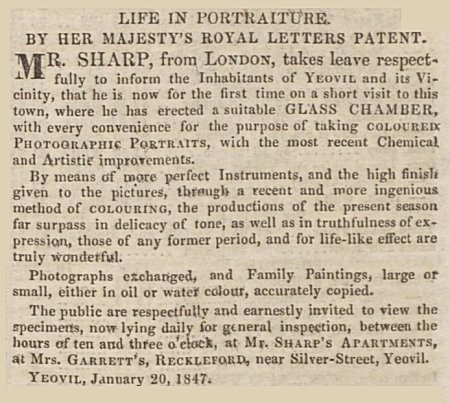
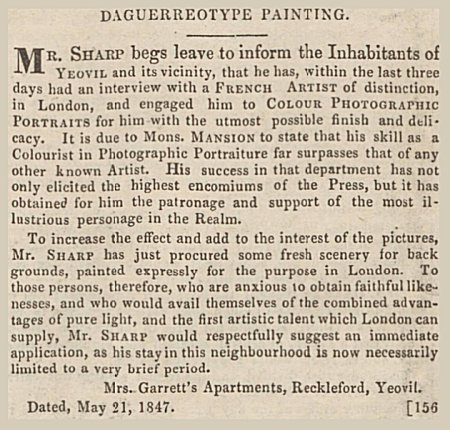
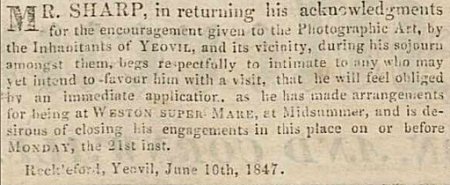
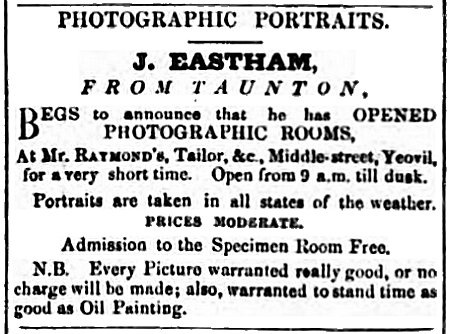
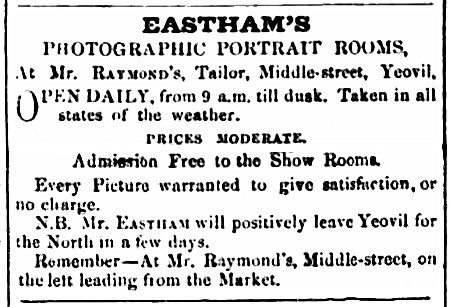
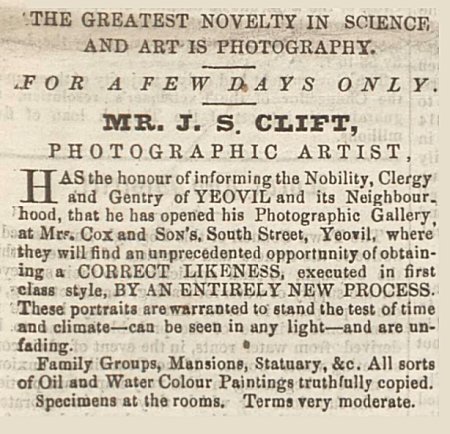
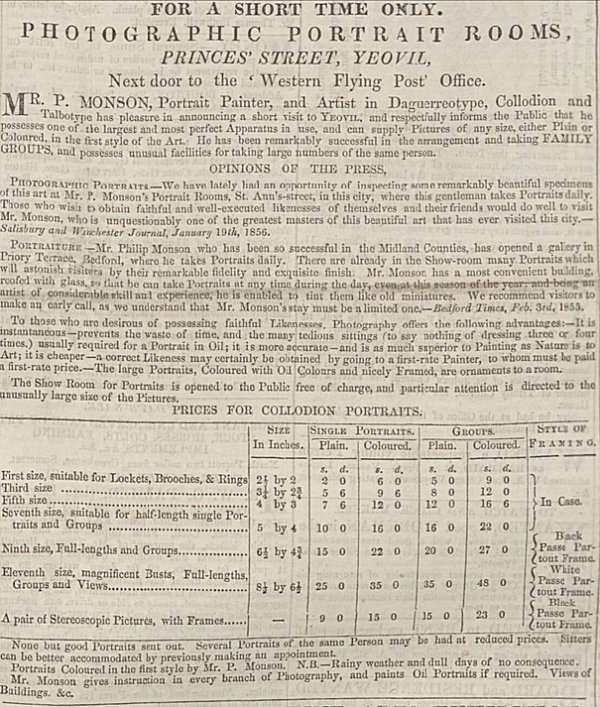
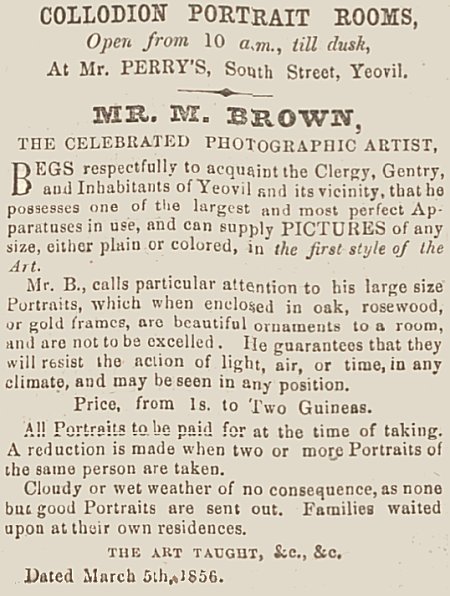
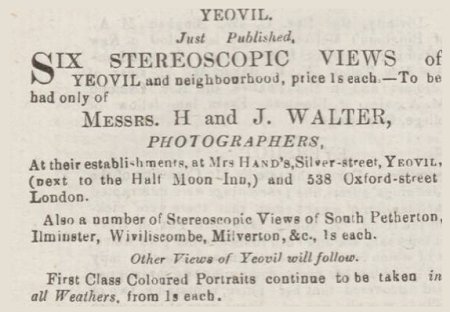
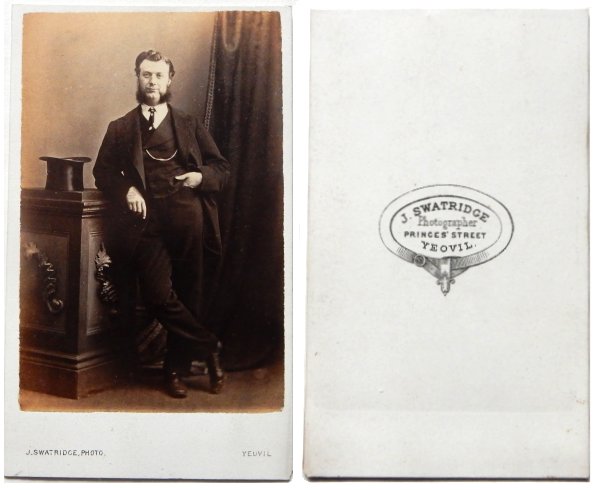
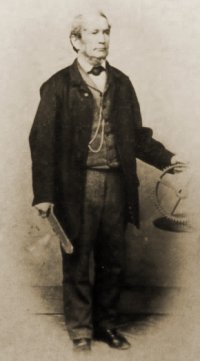
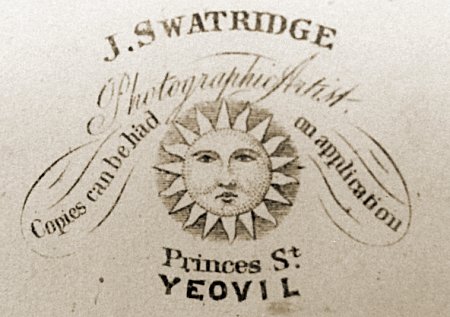
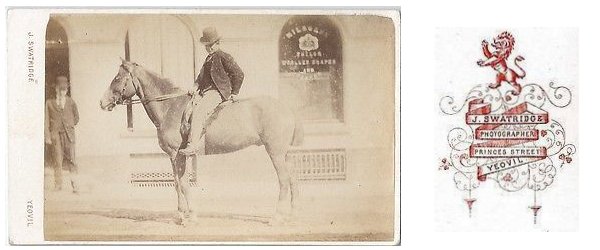
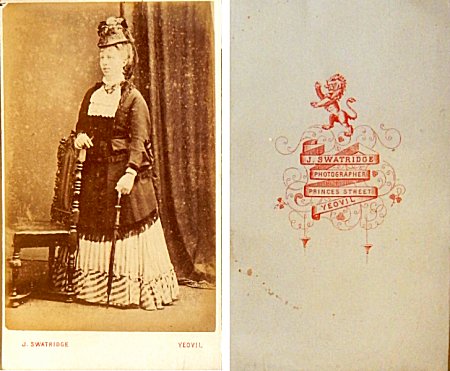
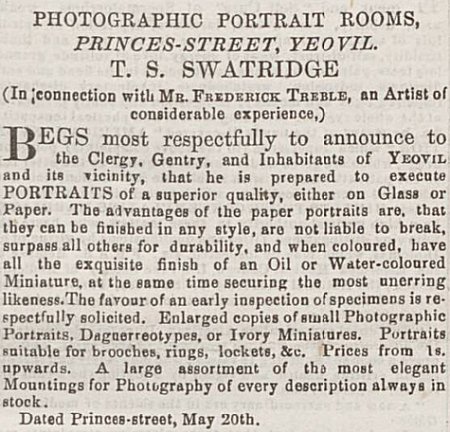
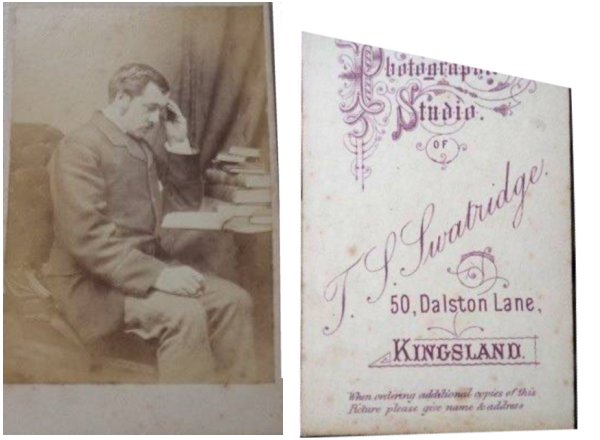
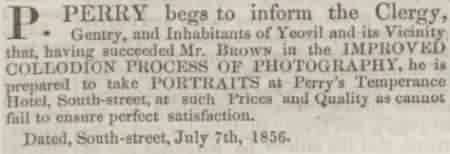
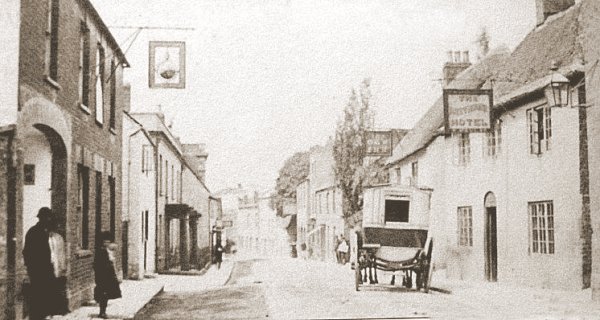
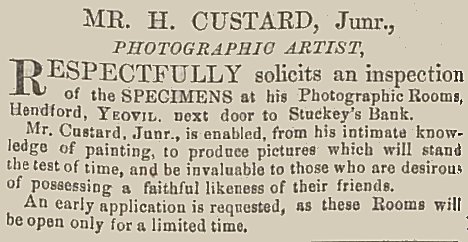
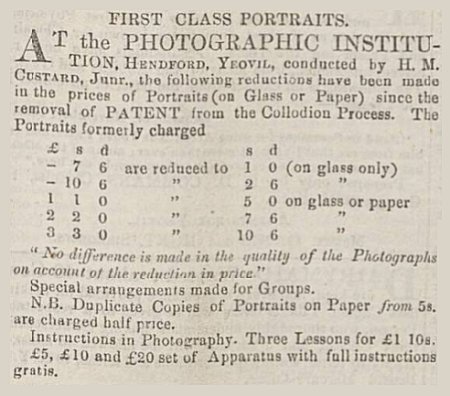
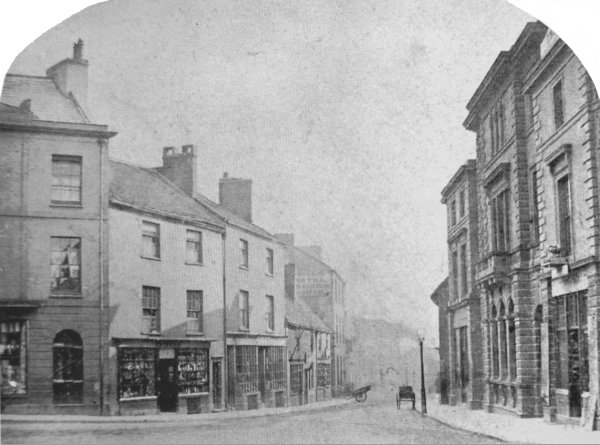
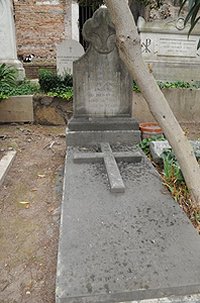 The
grave of
Henry
Marsh
Custard
Jnr.
The
grave of
Henry
Marsh
Custard
Jnr. 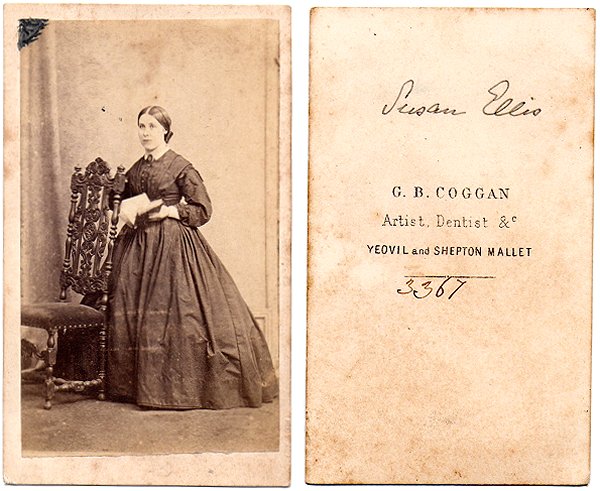
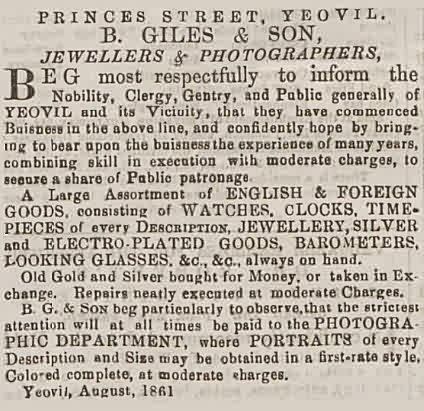
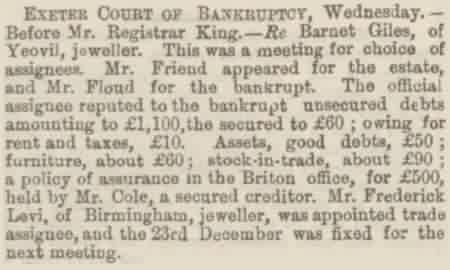
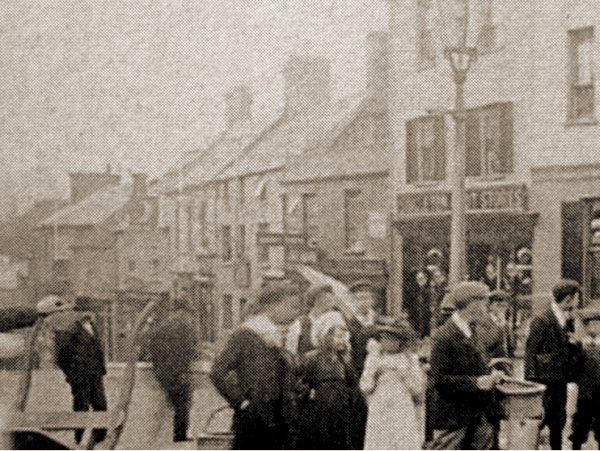
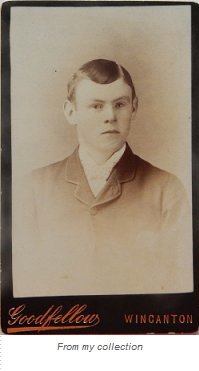 Henry Goodfellow was an early professional photographer in Yeovil. He
is known
from an
inscription
"Henry
Goodfellow,
Photographer,
Yeovil" on a
photograph
that has
been
dated to
about
1860
of
Henry Goodfellow was an early professional photographer in Yeovil. He
is known
from an
inscription
"Henry
Goodfellow,
Photographer,
Yeovil" on a
photograph
that has
been
dated to
about
1860
of
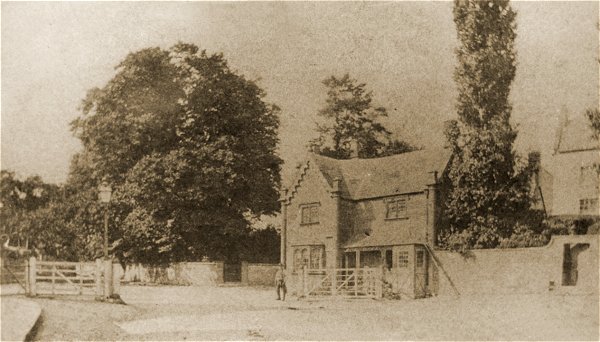
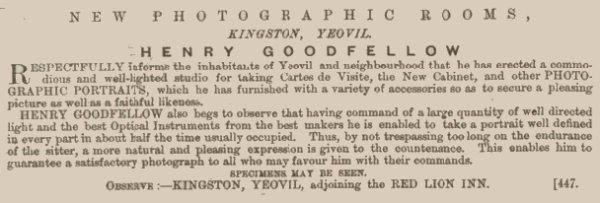

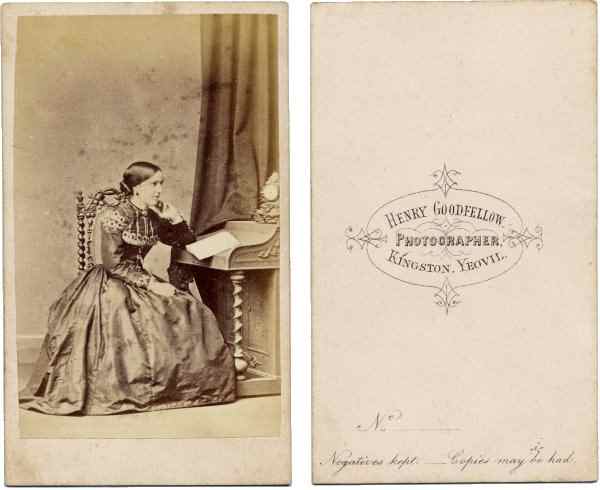
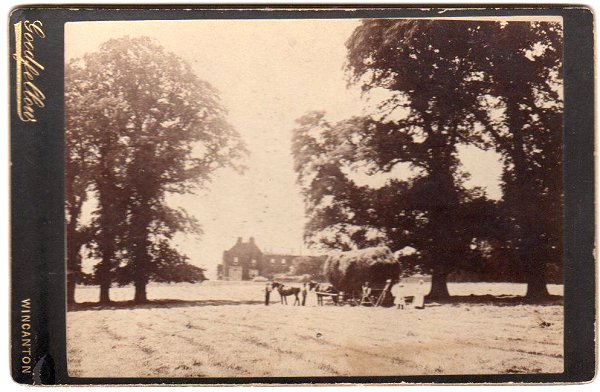

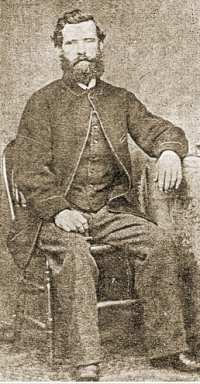
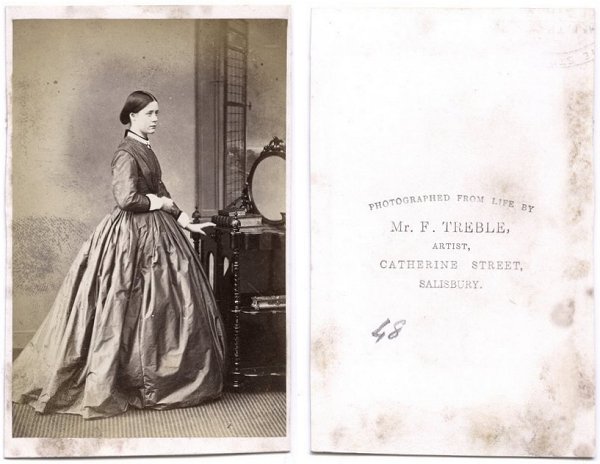
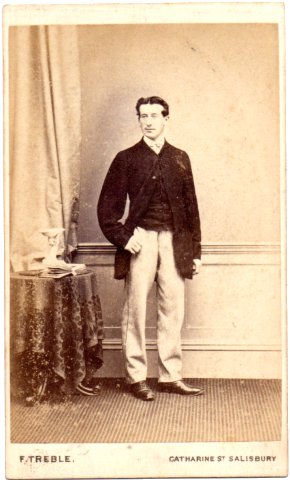

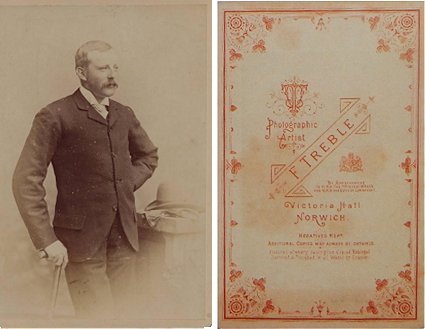
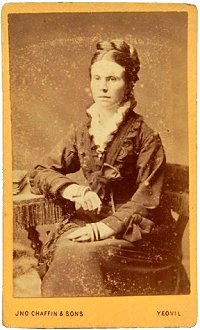
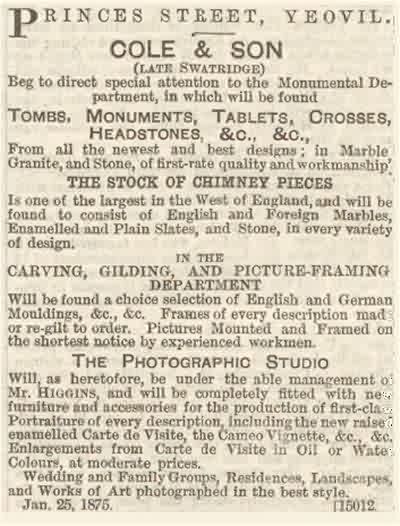
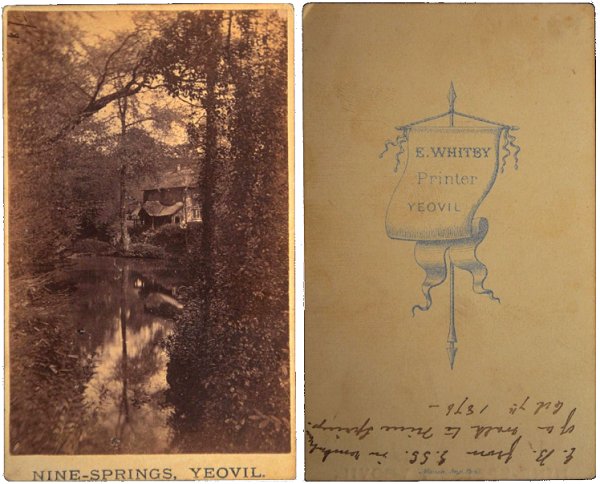
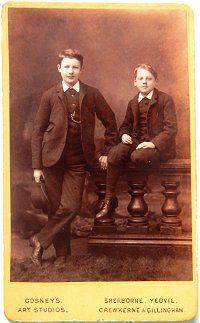
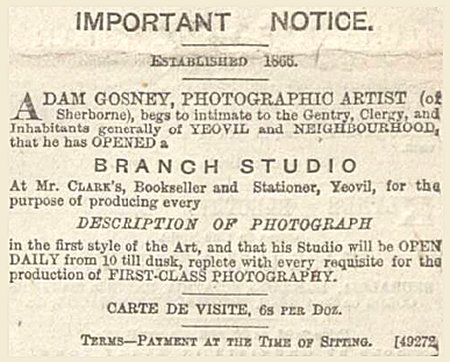
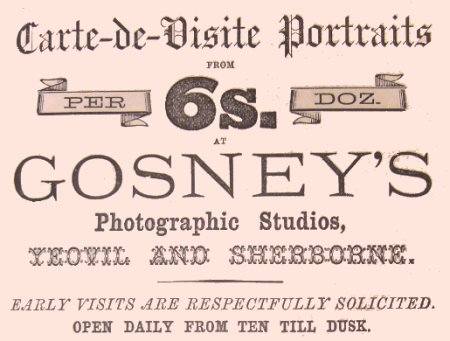
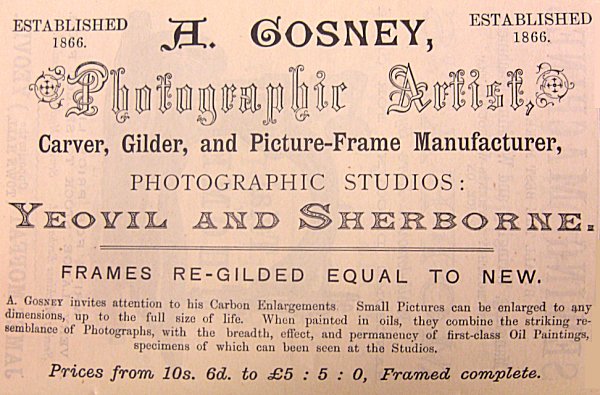

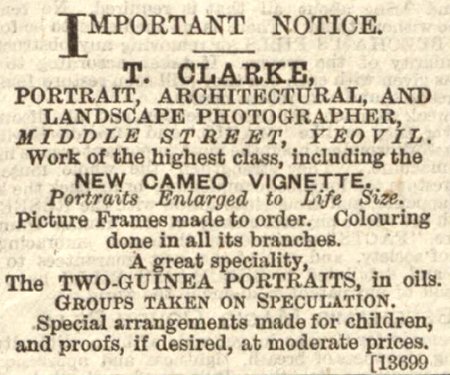
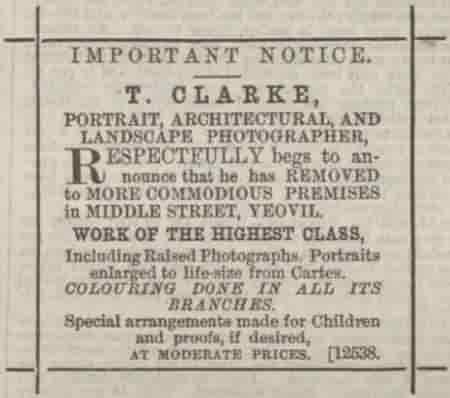
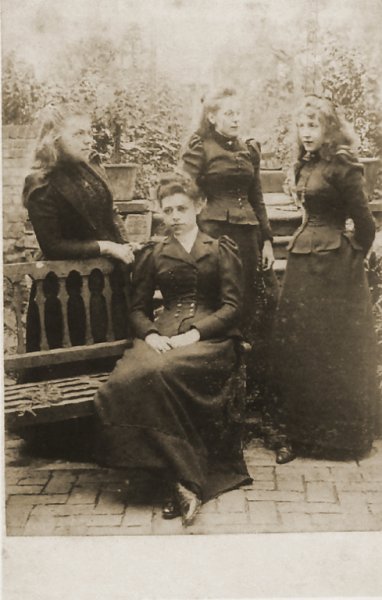

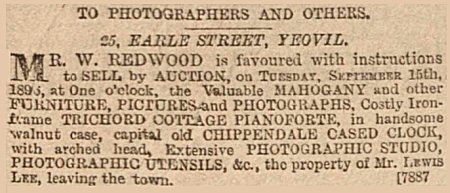
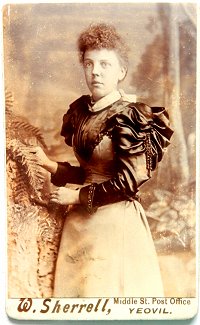
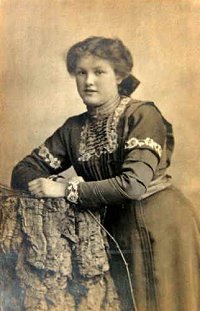
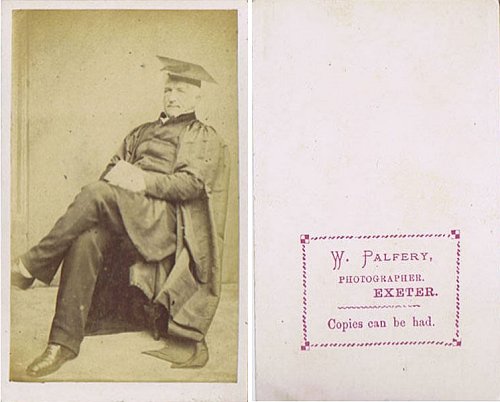
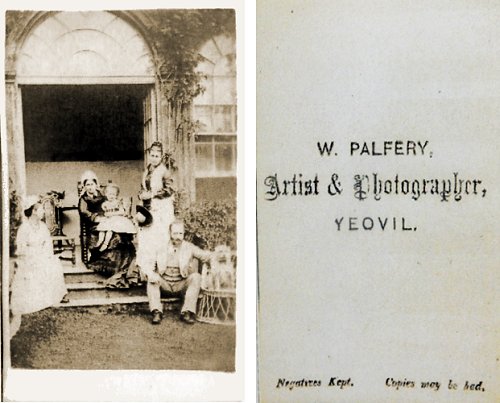
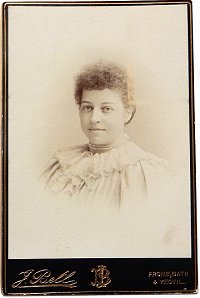
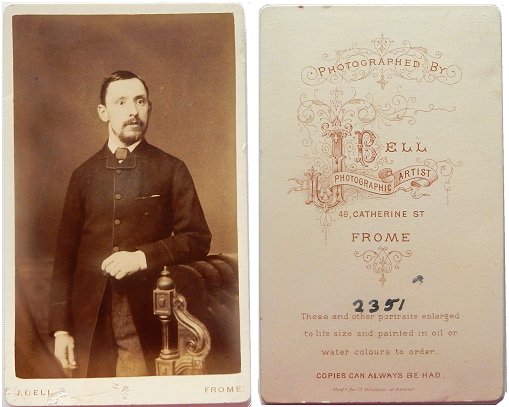
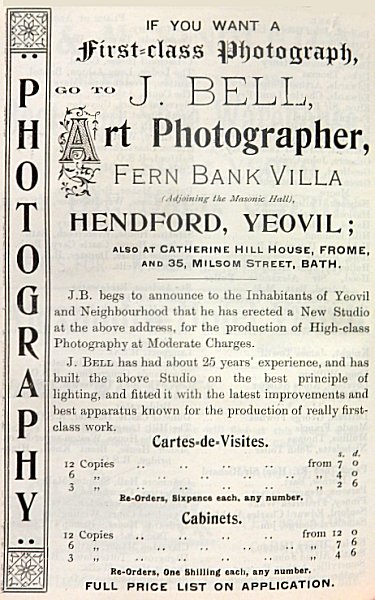
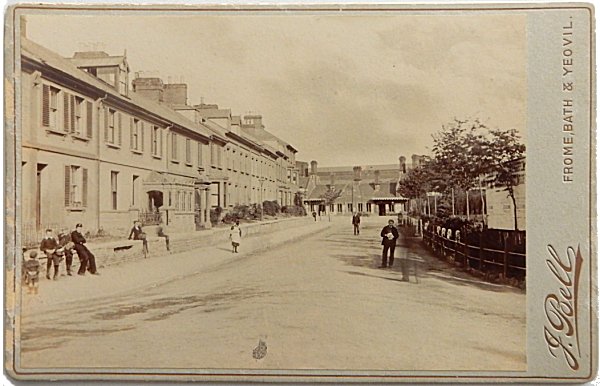
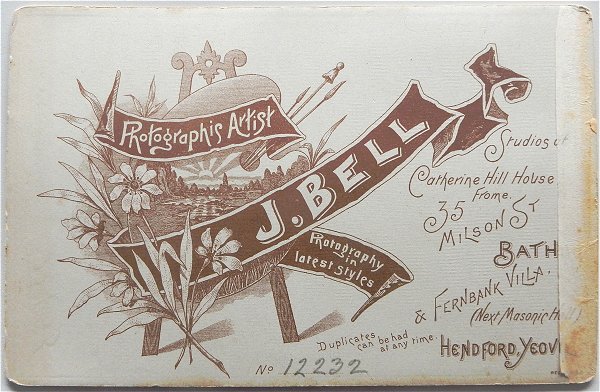




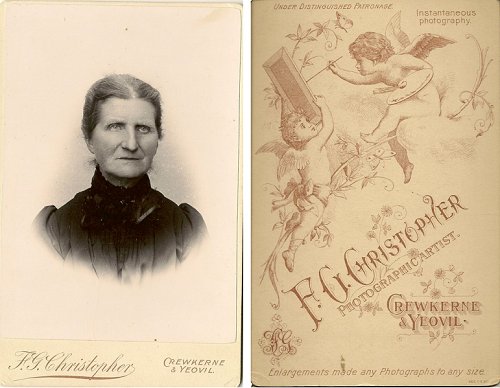
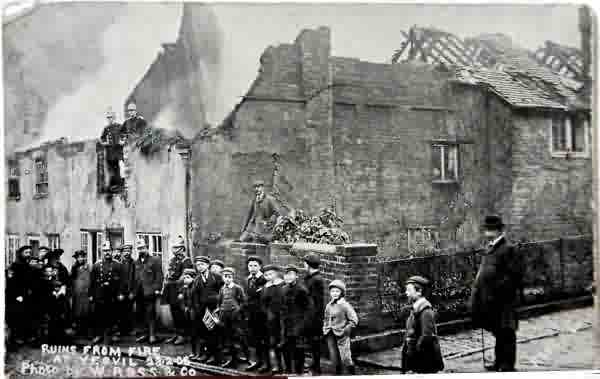
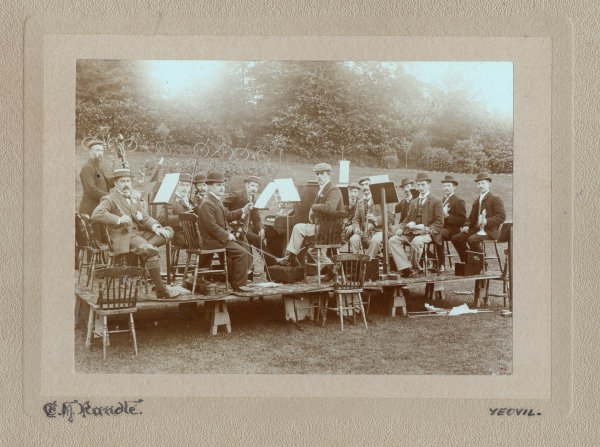
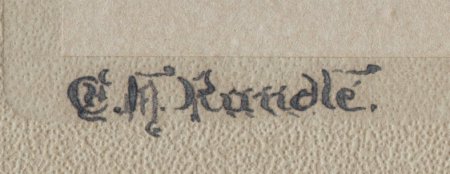
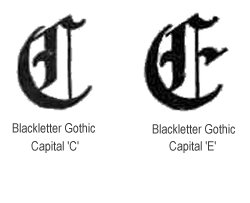 I
initially
thought
that the
name was
CH
Rundle,
but on
closer
examination,
and
comparison
to
'standard' Blackletter
Gothic
letters,
illustrated
at left, it
becomes
clear
that
what I
initially
interpreted
as a
capital
'C' is,
in fact,
a
capital
'E'.
I
initially
thought
that the
name was
CH
Rundle,
but on
closer
examination,
and
comparison
to
'standard' Blackletter
Gothic
letters,
illustrated
at left, it
becomes
clear
that
what I
initially
interpreted
as a
capital
'C' is,
in fact,
a
capital
'E'.